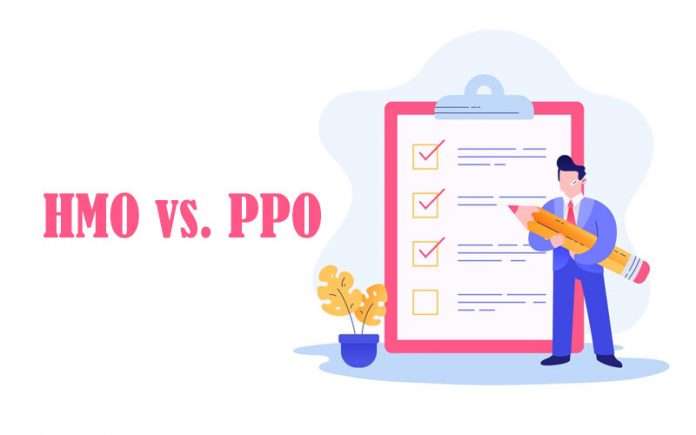Choosing between HMO and PPO is vital and a bit confusing to get the best healthcare treatment. And if you want the best healthcare treatment and are confused between both of them, then you have come to the right place. However, sometimes in our life, we have to go through illness or any other ailment. Then at that stage of life, it becomes vital to make a decision on which plan is best and works well for us.
Moreover, it is vital to secure your health insurance and almost impossible to understate the benefits. Nowadays, in case of an accident or illness, the increasing cost of treatment can cause the financial crisis to an individual or family. Therefore, to deal with this situation, we have to stay ready by choosing one of the health insurance plans. The healthcare insurance plan will play a role in hard times.
Before moving ahead to the differences between these plans, it is vital to understand the definitions of both.
Table of Contents
What do you mean by PPO
PPO is a network of healthcare providers. It provides multiple choices regarding healthcare providers to its members.
It does not restrict us to receive care in-network and is optional to appoint primary care physicians. Moreover, we can directly make appointments with providers without any referral.
Most people want to use this plan because it is lower in cost and provides better benefits. However, patients can also get the treatment from the providers outside, but they have to pay more for that.
What is HMO
It is a network of healthcare providers that provides services at cheaper rates after negotiating with an insurance company.
From a list of approved health care providers, patients can choose a single physician. Moreover, getting referrals from the PCP or gatekeeper, patients can see health care specialists such as cardiologists, rheumatologist and obstetricians.
Depending on the health plan and company, HMO provides various benefits and services to its members. Services under HMO include laboratory tests, prescribed medication, cancer and health screenings. It also covers well-baby care and prenatal care.
Differ between PPO and HPO
As we get to know some differences between them from their definitions. But there are some more differences between them;
- With PPO, patients can directly see the specialist without any referral. Whereas, in the HMO plan, PCP first sees their patients and, if PCP can’t treat the problem, then they are referred to a specialist.
- In PPO plans, patients have the freedom to visit any healthcare provider. Whereas, with HMO plans, they have to stay in a network of providers to receive coverage.
While staying in the HMO plan, you can expect the maximum insurance services. In a PPO plan, you can visit any doctor outside of your network without any restriction.
Therefore, PPO is the best plan to go because of its no restrictions. But wait before making any decision because there are many other things to consider between the two.
Cost analysis:
The cost analysis is the vital factor between the HPO and PPO plan. However, with HMO plans, patients can enjoy lower premium costs and offer no coverage outside the network. Whereas, according to the monthly premium, the coverage outside the area is usually higher in PPO plans.
For example, in 2019, the average monthly premium for PPO is $508, compared to the monthly premium of $479 for HMO.
Generally, the out of stock cost for PPO is higher than that of HPO because HPO only charges a copay and does not have annual deductibles at the time of service. Whereas, PPO is a little complicated that includes copays, deductibles and coinsurance. Therefore, this plan will work just as the HPO. If your service contains copays, then you will be able to pay a set amount at the time of service. Moreover, you have to make a co-payment at the time of service after the deductible.
Lastly, low premium, out of pocket costs, or a less restrictive network for care are the vital components for deciding between HMO and PPO.
Services:
The range of covered services depends on the company and plan you choose. However, if you select a plan that offers any ACA marketplace, then it will require emergency services, maternity care and preventive care such as immunizations and checkups.
Filing a claim
Filling a claim is another big difference between HMO and PPO. With this plan, you don’t need to file a claim because the insurance company directly pays the healthcare provider.
Whereas, in a PPO plan, before filing a claim for reimbursement for their company, you first need to pay out the network provider for the services you received.
Filing a prescription:
As the HMO has limited subscribers, where we can have a subscription filled and covered under the plan for the pharmacy locations.
Whereas, in PPO, you can fill prescriptions anywhere. However, when using an out of network pharmacy, you have to pay more for prescription drugs.
Exceptions:
With an HMO plan, you do not need any referral during an emergency. You can visit a specialist such as a gynecologist and an obstetrician.
For Dental:
For dental care, HMO and PPO plans are called DHMO and DPPO that work accordingly as HMO and PPO. However, DHMO requires primary dental care with no coverage outside the network and lower expenses out of the network.
Advantages and disadvantages of HPO and PPO
HMO and PPO both are plans that provide their members with the best healthcare facilities. But both have their advantages and disadvantages. So if we are deciding to select one the insurance plan, then it is vital to understand the pros and cons of HMO and PPO.
Pros of PPO:
- A PPO plan provides a broad network of physicians, medical and hospital providers.
- With a PPO plan, you do need any referral from your primary care physician (PPC) to visit any specialist.
- Additionally, you can also elect to treat with an out of network work.
- You can file a prescription anywhere with this plan.
Cons of PPO:
- PPO is very expensive.
- Members need to pay a higher monthly premium because it’s a big network of physicians and more freedom.
- Depending on your healthcare issues and plan, it’s out of pocket costs are high.
- It has higher deductibles.
- Coinsurance and copays are the same as PPOs.
- You might have to pay your medical bills and submit a claim for reimbursement depending on your plan.
Pros of HMO:
- With this plan, you can visit in-network PCP. You have to visit the PCP before any other doctor. And visiting PCP is beneficial for us because, with a single physician, he or she will be able to get to know our health goals and medical history. Therefore, this way might lead to more focussed medical care.
- It offers lower-cost healthcare because it only covers in-network medical treatment and negotiation with their network providers.
- It includes both out of pocket costs as well as monthly premiums.
- HMO does not have any deductible costs, which is the amount of money you pay for medical treatment.
- With an HMO plan, the insurance starts paying all your medical bills.
- This plan typically pays your in-network physician and medical charges directly.
- You don’t need to file the claim with this plan.
Cons of HMO:
- HMO has a smaller physician network within a specific geographic region.
- Unless you need emergency treatment, you must have to stay within its network.
Bottom line
We hope this article will help you to choose the right one between HMO and PPO. Selecting the right option depends on the personal preferences of customers. Lastly, PPO provides freedom of choice and HMO provides affordability. However, according to the statistics, most of the people are enrolling in the PPO than HPO.
It is shown by a study that HMO give better customer satisfaction ratings. The right choice between HMO and PPO is mainly a choice between services and costs.


















